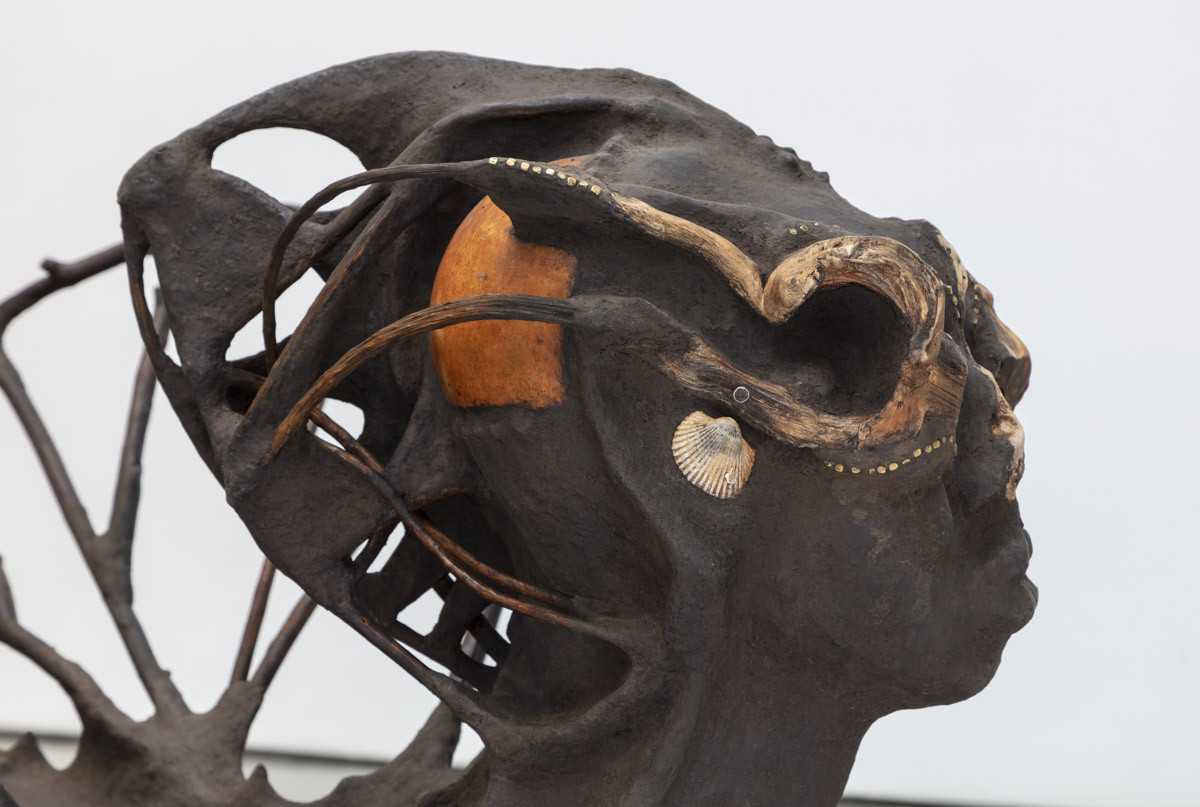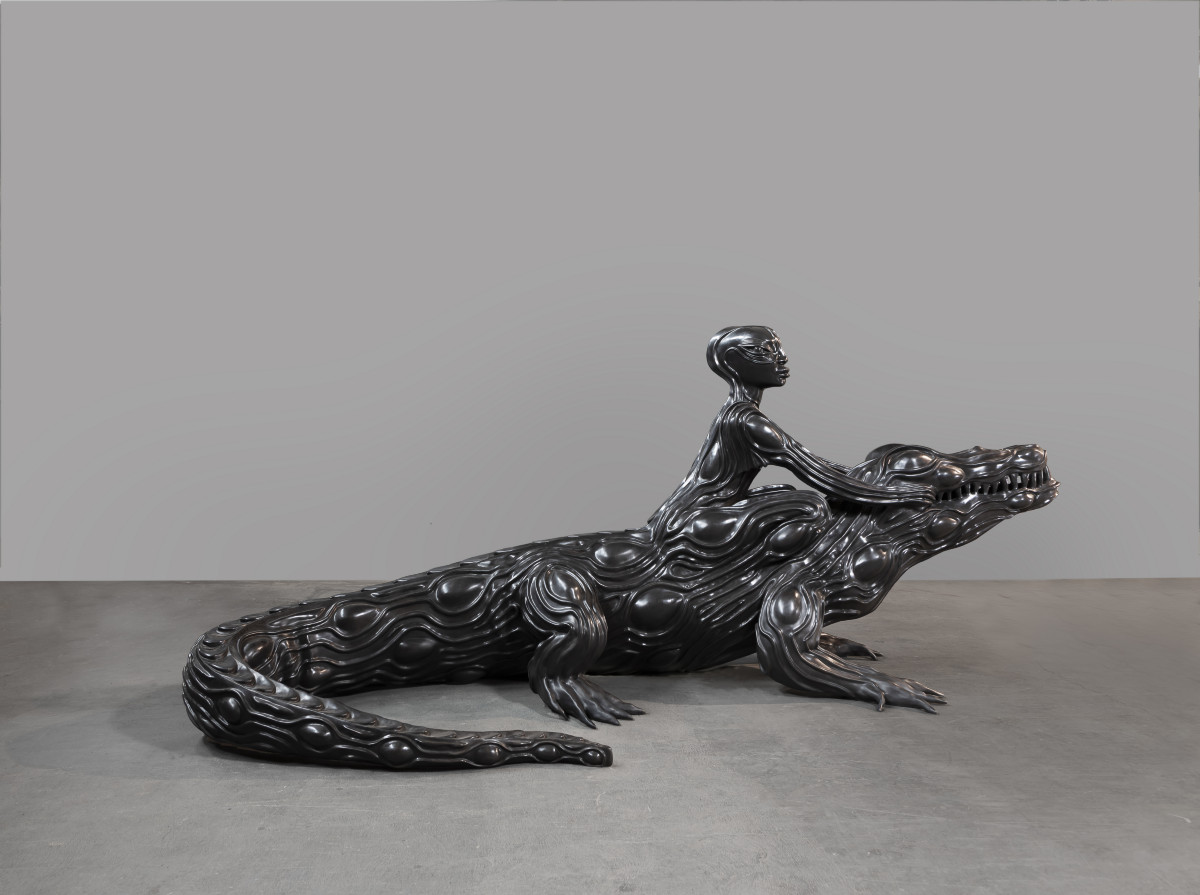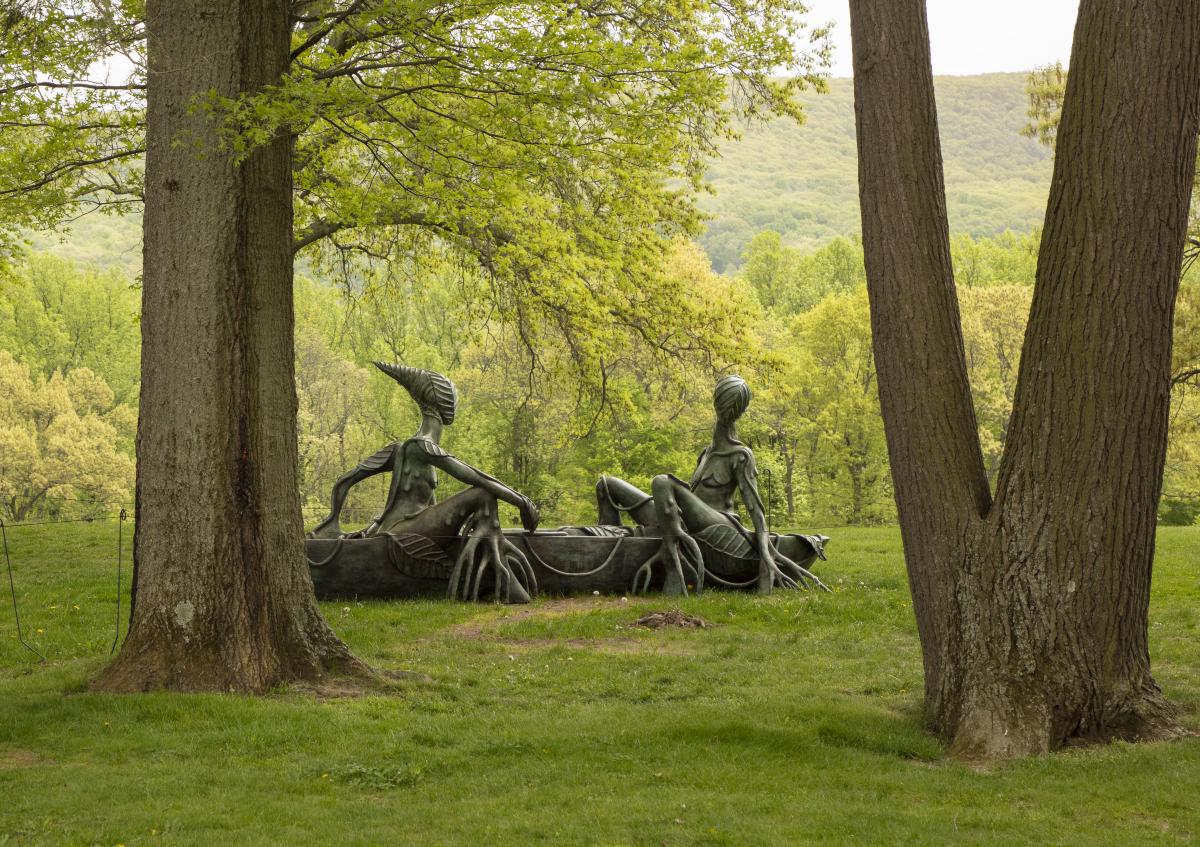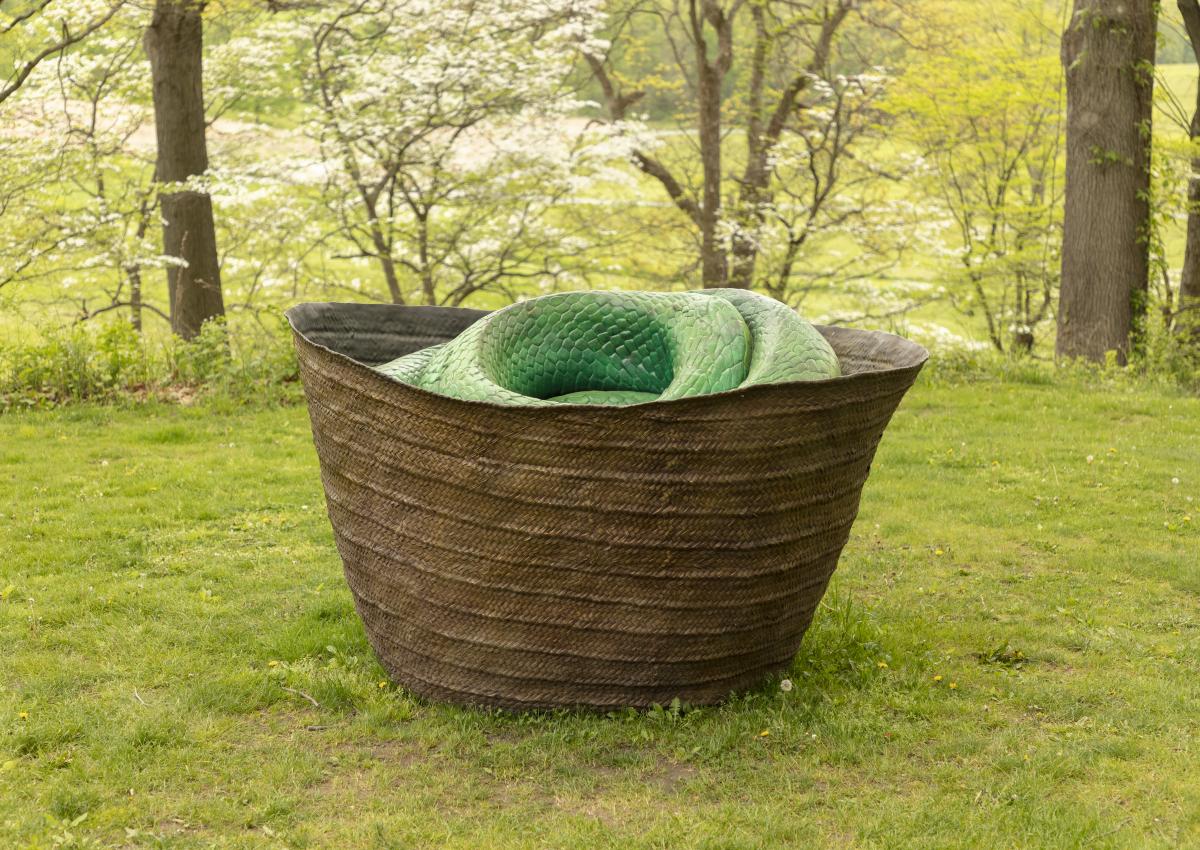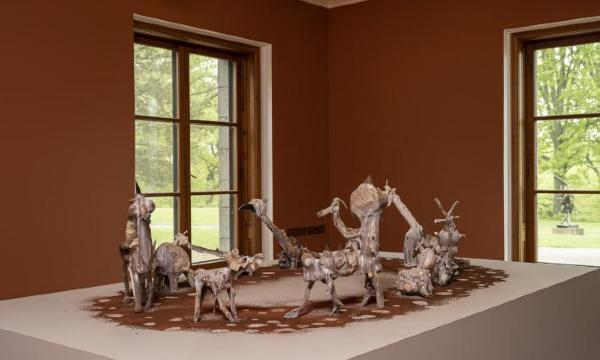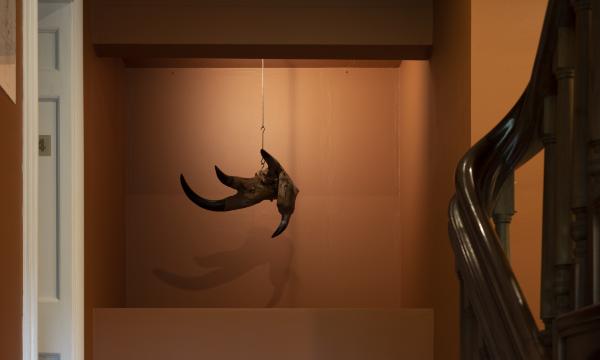Wangechi Mutu
May 21 – November 7, 2022
Mutu’s exhibition foregrounds the artist’s current practice in earth and bronze sculptures, which populate Storm King’s expansive landscape. Mutu’s work reverently engages with the natural world to address ideas of historical violence and its impact on women, mythology, and ritual, and their inextricable relationships with our ecosystems. The artist molds her ideas and materials to assert the existence and cultural relevance of ancient original myths, fables, and histories.
Sited outside on Museum Hill—on land that is the ancestral home of the Lenape—are eight of Mutu’s large-scale cast bronze works, including In Two Canoe, a sculptural fountain in which two figures become one with their vessel and the landscape around them. Installed in the context of Storm King’s fields, meadows, woods, and ponds, these sculptures take on new resonance, while adding layers of meaning to the site’s existing ecologies and histories, including the consideration of the site and region as colonized land. Mutu envisions landscape as a fertile backdrop for reflecting, mythmaking, and setting the scene in which women become powerful and autonomous protagonists and global indigeneity is centered. This juxtaposition asserts the importance of experiences, perspectives, and knowledge systems excluded from dominant narratives, and the capacity to imagine not only new worlds but more equitable versions of our own.
For the indoor portion of the exhibition, Mutu brings the natural world inside through both raw materials and visual representations. New sculptures and two films, My Cave Call (2021) and Eat Cake (2012), offer portals into imagined and mythological landscapes and span both floors of Storm King’s Museum Building galleries.
The Wangechi Mutu exhibition is made possible by generous lead support from

Lead support for the exhibition is provided by the Ohnell Charitable Lead Trust and the Samuel Freeman Charitable Trust. Support is also provided by the Helis Foundation and the Lipman Family Foundation.
This project is supported in part by an award from the National Endowment for the Arts.
Images: Wangechi Mutu, The Glider (2021), In Two Canoe (2022), Nyoka (2022), and Crocodylus (2020), courtesy of the artist and Gladstone Gallery. Photographs by David Regen.
Sited outside on Museum Hill—on land that is the ancestral home of the Lenape—are eight of Mutu’s large-scale cast bronze works, including In Two Canoe, a sculptural fountain in which two figures become one with their vessel and the landscape around them. Installed in the context of Storm King’s fields, meadows, woods, and ponds, these sculptures take on new resonance, while adding layers of meaning to the site’s existing ecologies and histories, including the consideration of the site and region as colonized land. Mutu envisions landscape as a fertile backdrop for reflecting, mythmaking, and setting the scene in which women become powerful and autonomous protagonists and global indigeneity is centered. This juxtaposition asserts the importance of experiences, perspectives, and knowledge systems excluded from dominant narratives, and the capacity to imagine not only new worlds but more equitable versions of our own.
For the indoor portion of the exhibition, Mutu brings the natural world inside through both raw materials and visual representations. New sculptures and two films, My Cave Call (2021) and Eat Cake (2012), offer portals into imagined and mythological landscapes and span both floors of Storm King’s Museum Building galleries.
The Wangechi Mutu exhibition is made possible by generous lead support from

Lead support for the exhibition is provided by the Ohnell Charitable Lead Trust and the Samuel Freeman Charitable Trust. Support is also provided by the Helis Foundation and the Lipman Family Foundation.
This project is supported in part by an award from the National Endowment for the Arts.
Images: Wangechi Mutu, The Glider (2021), In Two Canoe (2022), Nyoka (2022), and Crocodylus (2020), courtesy of the artist and Gladstone Gallery. Photographs by David Regen.
Video courtesy of Wangechi Mutu Studio and Gladstone Gallery. Videographer: Graham Mason.

